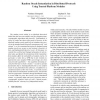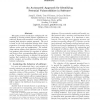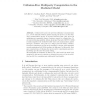285 search results - page 28 / 57 » Computationally Sound, Automated Proofs for Security Protoco... |
AINA
2007
IEEE
14 years 2 months ago
2007
IEEE
The random oracle model is an idealized theoretical model that has been successfully used for designing many cryptographic algorithms and protocols. Unfortunately, a series of res...
SP
1998
IEEE
13 years 12 months ago
1998
IEEE
This paper presents results from analyzing the vulnerability of security-critical software applications to malicious threats and anomalous events using an automated fault injectio...
CORR
2006
Springer
13 years 7 months ago
2006
Springer
Although good encryption functions are probabilistic, most symbolic models do not capture this aspect explicitly. A typical solution, recently used to prove the soundness of such ...
CRYPTO
2009
Springer
14 years 2 months ago
2009
Springer
Collusion-free protocols prevent subliminal communication (i.e., covert channels) between parties running the protocol. In the standard communication model, if one-way functions ex...
CADE
2004
Springer
14 years 8 months ago
2004
Springer
Deduction modulo is a theoretical framework for reasoning modulo a congruence on propositions. Computational steps are thus removed from proofs, thus allowing a clean separatation...



